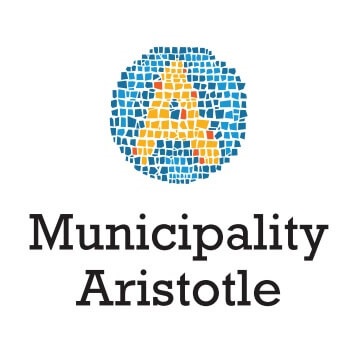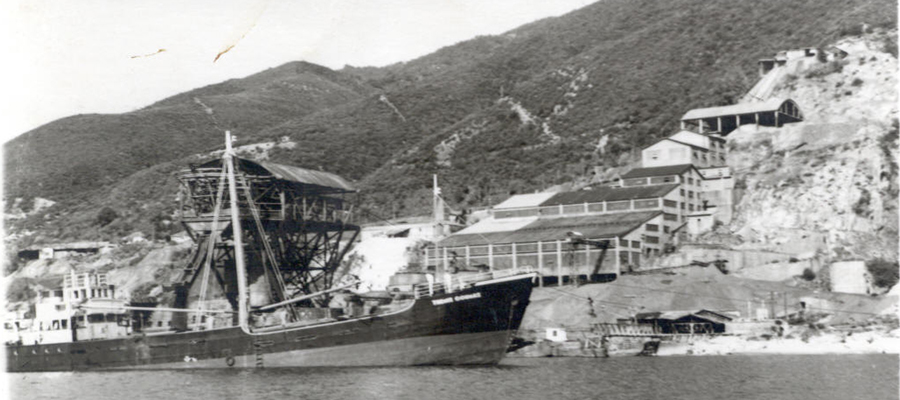Mining activity was considered very important in ancient Greece. The silver from the mines of Laurion supported the cultural prosperity of Athens during the classical period and strengthened the city’s defense during the Persian Wars. Similarly, the gold mines of Pangaion contributed to the rise of the Macedonian dynasty under Philip II and financed the campaigns of Alexander the Great. Herodotus mentions the mining operations of the Macedonian era and states that during Philip II’s reign, slaves worked to extract sulfurous ores.
Mining activity continued until the Roman period. However, the Roman conquest of the rich gold and silver mines of Spain resulted in the mines of Chalkidiki remaining dormant for a long period. Their exploitation resumed during the Byzantine era.
A mining center during that time was “Siderokapsia” (commonly known as Siderokapsa), a region north of Isvoros, present-day Stratoniki. The name Siderokapsia first appears in the 9th century. With the conquest of the region by the Ottomans in the early 15th century, the mines of Chalkidiki experienced a new period of prosperity. Around 500-600 furnaces were operating, processing zinc and lead, and miners were required to deliver one twelfth of the silver they extracted as tax to the sultan. In the 16th and 17th centuries, the area saw alternating periods of prosperity and decline.
THE MANTEMOCHORIA
In the region, a peculiar system had developed, as 12 villages, known as the Mantemochoria, had been assigned to serve the mine, providing workers for its operation. Already in 1705, a sultanic firman granted the inhabitants the right to exploit the silver mines. At the same time, a state mint was operating. Documents concerning the designation of the Mantemochoria as a self-governing area are preserved in the Historical Archive of Macedonia.
In 1806, the English traveler G. M. Lickey refers to 12 “Free Villages,” as he calls them, which were governed by Madem Aga, who also controlled the mine. These villages were Anthemounta (today’s Galatista), Vavdo, Riana, Stano, Varvara, Liaringova (today’s Arnaia), Novoselo (that is, Neochori), Mahala or Stageira (which was also the capital), Isvoros (today’s Stratoniki), Chorouda, Revenikia (today’s Megali Panagia), Ierissos. The production of silver secured a favorable self-management regime for the Mantemochoria, which lasted until their participation in the 1821 independence struggle. This event led to the deployment of a military force of 10,000 men to guard the mines. The Mantemochoria were forced to take over the maintenance of this military force. Thus, in the second half of the 19th century, the mines went through a serious crisis, from which they emerged with the establishment of the French-Ottoman company called the Cassandra Mines. In 1893, the rights to exploit the antimony, argentiferous lead, and manganese mines were granted to the company.
By extracting and smelting sulfurous and manganiferous ores, the area secured gold and silver for the Sublime Porte. The name Cassandra Mines appears in 1893, the year the exploitation rights were granted to a Franco-Ottoman company based in Paris. About 600 furnaces employed a multinational community of 6,000 workers, in an early version of a five-day workweek, as Jewish workers had a day off on Saturday and Christians on Sunday.
The 19th century marked the transition of the Mantemochoria from self-governance to dependent labor under corporate management for the exploitation of the mines. By 1900, the company had processed 72,000 tons of ore in its furnaces. The company exploited secondary manganese ores from the iron-rich layers of the Black Stones, Piavitsa, Basdekio, and Olympiada. In 1901, surface mining of pyrite began in Madem Lakko and continued until 1974, primarily with underground mining methods.
EARLY 20TH CENTURY
In 1920, the Stratonion mines entered the penultimate modern period of exploitation. The French-Ottoman company was succeeded by the Anonymous Greek Chemical Products and Fertilizers Company. The AEECP & Fertilizers, as it was known for short, was founded in 1909 in Athens by Nikolaos and Angelo Kanellopoulos, Lysimachos Charilaos, Alexandros Zachariou, Leontios Oikonomidis, and Leonidas Arapidis. It produced acids for industrial use, superphosphate fertilizers, and soon expanded into glass manufacturing. The company foresaw the necessity for widespread fertilizer use to develop agriculture in the country, and thus moved to acquire mines to secure sulfur, the key raw material for their production. It purchased the Stratonion, Cyprus, Ermionis, Oropos, and Koronis mines and established a fertilizer plant in Drapetsona.
At that time, the workers’ housing facilities and the necessary common service areas were located at the highest point of the mining site with a view of the Ierissos bay, inherited by AEECP & Fertilizers from the French-Ottoman company. Their placement was directly related to the fact that the mining activity was at that time limited to the adjacent (now closed) Tunnel 323.
The present-day Stratoni was essentially the loading ramp for the ore, which was transported by a Decauville-type railway over a distance of 6 kilometers. In 1932, it was replaced by an aerial transportation system. As mining activity increased, new strictly functional facilities were built on the level of the still active Tunnel 262. These included the electric power distribution unit and compressed air preparation, the machine shop, offices, and guard posts. The steam-powered electric generation unit was located on the Stratoni beach.
The beginning of Stratoni’s development as a settlement occurred with the Asia Minor catastrophe, when refugees from the mining village of Balia-Madem, near the Hellespont, settled in makeshift huts in Stratoni. Oral testimonies confirm that residents of Balia had been coming to work in the Stratoni mines long before the Asia Minor catastrophe. After the strong earthquake of 1932 that destroyed many settlements in the wider area, known housing units were rebuilt in Stratoni under the guidance of the Ministry of Reconstruction. Some of the buildings still exist today.
After World War II, the majority of shares in AEECP & Fertilizers passed into the hands of Athanasiadis Bodossakis, whose activities significantly boosted the mining sector, particularly in Stratoni. In 1970, AEECP & Fertilizers constructed a beneficiation plant on the beach of Stratoni and began the production of mixed sulfurous ores. At the same time, it constructed two-story housing complexes (110 in total) for workers and independent detached houses for the scientific staff.
In February 1967, the new loading ramp, which was built in just 3 months, was inaugurated. By the end of the 1970s, the Workers’ Housing Organization built the well-known workers’ housing complexes at the entrance of the settlement. Since 1960, the company had granted the British Julian Hunter the right to exploit the manganese deposits in Piavitsa. Manganese mining gradually declined and ceased definitively in the mid-1980s. Remnants of the Piavitsa manganese mine of Hunter (the beneficiation plant, water channels, and open mining excavations) can still be found between Stagira and Neochori, at a point named after the owner.
The lead, zinc, and gold-silver deposit of Olympiada was discovered in the late 1960s by AEECP & Fertilizers, and production at the mine began in 1972 and continued until 1995. In 1976, a new beneficiation plant was built at Olympiada, where products from the mining activities were sent for loading at the Stratoni ramp. Today, the Cassandra Mines, after passing through the ownership of the companies TVX Hellas A.E. and Kinross Gold Corporation, have been acquired by Hellenic Gold S.A., a subsidiary of the Canadian mining company European Goldfields.



